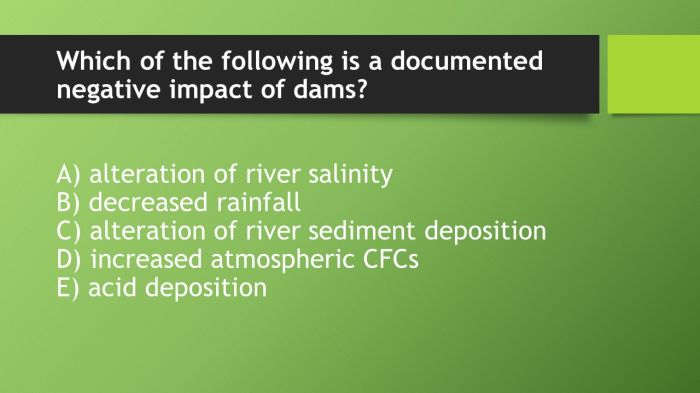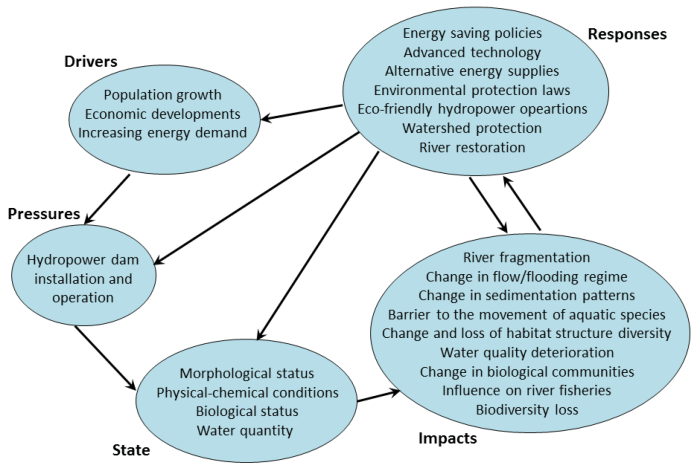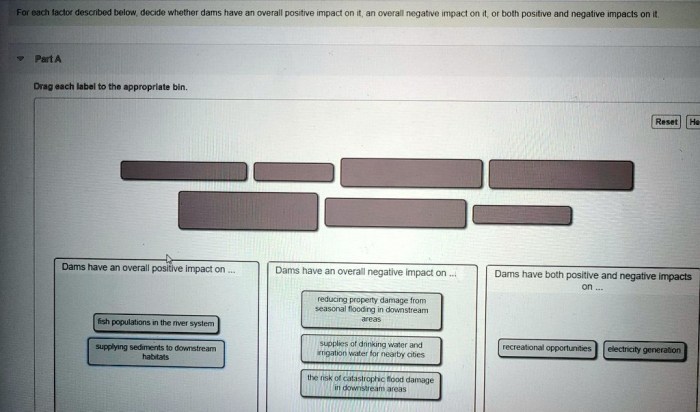Which of the following are documented negative impacts of dams – Embarking on an exploration of the documented negative impacts of dams, this discourse delves into the multifaceted consequences of these structures on both natural and human systems. The ramifications of dam construction extend beyond the immediate vicinity of the dam itself, creating a ripple effect that can profoundly alter entire river systems and the communities that depend on them.
This comprehensive analysis will delve into the environmental, social, economic, structural, and cumulative impacts of dams, providing a nuanced understanding of the challenges they pose. By shedding light on these negative consequences, we aim to inform decision-making processes and foster a more sustainable approach to water resource management.
Environmental Impacts

Dams can have significant negative impacts on aquatic ecosystems. The construction of dams alters natural flow patterns, leading to habitat loss and fragmentation for aquatic species. Impoundments created by dams can disrupt fish migration and spawning, affecting the survival and reproductive success of fish populations.
Downstream water quality can also be affected by dams. Sedimentation and nutrient enrichment are common issues associated with dams. Sedimentation can clog waterways and smother aquatic vegetation, while nutrient enrichment can lead to algal blooms and eutrophication.
Loss of Aquatic Habitat
- Dams block the natural flow of rivers, creating barriers that impede the movement of aquatic organisms.
- Impoundments created by dams can inundate riparian and floodplain habitats, which are critical for many aquatic species.
- Changes in water temperature and flow patterns can alter the suitability of aquatic habitats for certain species.
Impact on Downstream Water Quality
- Dams trap sediment, which can lead to sedimentation downstream of the dam.
- Sedimentation can clog waterways, smother aquatic vegetation, and reduce water quality.
- Dams can also release nutrients into the water, which can lead to algal blooms and eutrophication.
Alteration of Natural Flow Patterns, Which of the following are documented negative impacts of dams
- Dams alter the natural flow patterns of rivers, which can affect fish migration and spawning.
- Changes in flow patterns can disrupt the timing of fish migrations and make it difficult for fish to reach their spawning grounds.
- Altered flow patterns can also affect the availability of food and habitat for fish.
Questions and Answers: Which Of The Following Are Documented Negative Impacts Of Dams
What are the primary environmental impacts of dams?
Dams can disrupt natural water flow patterns, fragment aquatic habitats, and alter downstream water quality, leading to a decline in biodiversity and ecosystem health.
How do dams affect local communities?
Dam construction can displace communities, disrupt traditional livelihoods, and alter cultural heritage associated with riverine ecosystems.
What are the potential structural and safety concerns associated with dams?
Dams require regular maintenance and monitoring to ensure their integrity. Failure to do so can increase the risk of catastrophic dam failure, resulting in loss of life and property.


